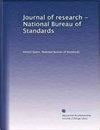Liposome-Based Flow Injection Immunoassay System
Journal of research of the National Bureau of Standards
Pub Date : 1988-11-01
DOI:10.6028/jres.093.160
引用次数: 4
Abstract
The development of many biochemical assays is dependent upon the specific interaction of an antigen with its antibody. This interaction is usually monitored using secondary labels with the most popular immunoassays employing fluorescent or radioactive tracers for detection of a single binding event. We are developing a novel flow injection analysis (FIA) system which contains an immunospecific reactor column and utilizes liposomes for detection. The fluorophore-loaded liposomes used in this assay can be made to provide signal enhancement in the range of one thousand to one million times per binding event making fluorescent assays competitive in sensitivity with radioimmunoassays. Liposomes are spherical structures composed of phospholipid bilayers that form spontaneously when phospholipid molecules are dispersed in water. The interior and exterior environments of liposomes are aqueous and, therefore, liposomes can be prepared with large numbers of water-soluble marker molecules trapped in their internal aqueous space. Liposomes are prepared by the injection method [1] from a mixture of dimyristoylphosphatidylcholine: cholesterol: dicetyl phosphate with a molar ratio of 5:4:1. Approximately 1 X 103 carboxyfluorescein molecules are encapsulated inside each liposome when the liposomes are formed in 3 mmol/L carboxyfluorescein solution. The liposomes may be "sensitized" to a particular antigen through covalent binding of that antigen to the polar head group of a phospholipid molecule which is incorporated into the lipid mixture at about 1 mol % prior to liposome formation. When the liposome is formed in water, approximately half of the antigen will be exposed to the external solution, and, therefore, will be available to interact with antibody binding sites. The combining of antigen on these "sensitized" liposomes with antibody can脂质体流动注射免疫分析系统
许多生化测定的发展依赖于抗原与其抗体的特异性相互作用。这种相互作用通常使用二级标记监测,最流行的免疫测定采用荧光或放射性示踪剂检测单一结合事件。我们正在开发一种新的流动注射分析(FIA)系统,它包含一个免疫特异性反应器柱,并利用脂质体进行检测。本试验中使用的载荧光团脂质体可以在每个结合事件的范围内提供1000至100万倍的信号增强,使荧光测定在灵敏度上与放射免疫测定相竞争。脂质体是由磷脂双分子层组成的球形结构,当磷脂分子分散在水中时自发形成。脂质体的内部和外部环境都是水环境,因此,脂质体可以制备出大量的水溶性标记分子,这些分子被困在脂质体内部的水空间中。脂质体是用注射法[1]从二肉豆浆酰基磷脂酰胆碱:胆固醇:磷酸二酯的摩尔比为5:4:1的混合物中制备的。当脂质体在3mmol /L的羧基荧光素溶液中形成时,每个脂质体内包裹约1 X 103个羧基荧光素分子。脂质体可通过将该抗原与磷脂分子的极性头基团的共价结合而对特定抗原“致敏”,磷脂分子在脂质体形成之前以约1mol %并入脂质混合物中。当脂质体在水中形成时,大约一半的抗原将暴露在外部溶液中,因此,将可与抗体结合位点相互作用。这些“致敏”脂质体上的抗原与抗体结合可以
本文章由计算机程序翻译,如有差异,请以英文原文为准。
求助全文
约1分钟内获得全文
求助全文

 求助内容:
求助内容: 应助结果提醒方式:
应助结果提醒方式:


